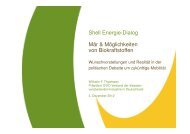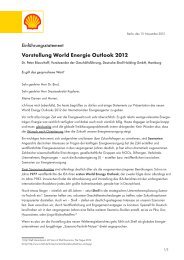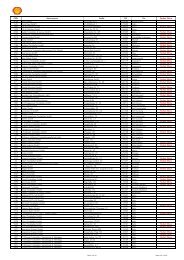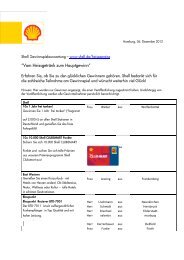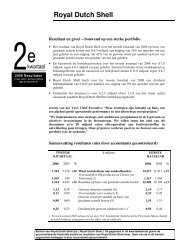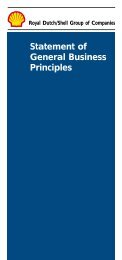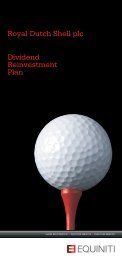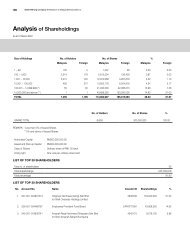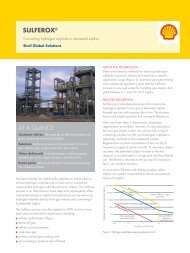Environmental Statement 2008.FH10
Environmental Statement 2008.FH10
Environmental Statement 2008.FH10
You also want an ePaper? Increase the reach of your titles
YUMPU automatically turns print PDFs into web optimized ePapers that Google loves.
3.3 The <strong>Environmental</strong> Aspects of our Operations<br />
<strong>Environmental</strong> aspects are elements of our activities, products<br />
or services that can interact with the environment. Figure<br />
3 illustrates the main environmental aspects we have identified<br />
for our offshore locations. We have grouped our significant<br />
environmental aspects into four areas:<br />
• Atmospheric emissions<br />
• Energy use<br />
• Discharges to water including spills<br />
• Waste<br />
3.3.1 Atmospheric Emissions<br />
We burn natural gas and sometimes diesel as fuel on our<br />
facilities to generate the power that is required to run our<br />
operations. In addition, our facilities are designed to ‘flare’<br />
(burn) and ‘vent’ (release unignited) a certain amount of<br />
hydrocarbon gas for safety reasons. Most locations have a<br />
continuous stream of gas to flare or vent designed to stop<br />
the ingress of air into the facilities that could cause explosive<br />
mixtures in the process. Additional amounts are also released<br />
through this route during installation shutdown, when all<br />
hydrocarbon gas systems are depressurised and when certain<br />
equipment items are out of service (either planned or<br />
unplanned).<br />
The majority of our emissions to air are the products of<br />
these combustion processes. The emissions include carbondioxide,<br />
nitrogen oxides, sulphur dioxide, carbon monoxide,<br />
unburnt hydrocarbons and particulates. These atmospheric<br />
pollutants have global (climate change), regional (acidification)<br />
and local (air quality) effects.<br />
3.3.2 Energy Use<br />
In addition to atmospheric emissions, consumption of diesel<br />
and gas to provide energy is an important issue from the<br />
point of view of depletion of natural resources. We are<br />
currently developing GHG and Energy Management Plans<br />
for each of our major installations.<br />
3.3.3 Discharges to water<br />
Most of our discharges to water consist of surplus water<br />
from our oil and gas wells. This "produced water" is a mixture<br />
of naturally occurring water in the reservoir, and seawater<br />
that has been injected into the reservoir to support the<br />
pressure and sweep oil towards the production wells. We<br />
separate the produced water from the oil and gas, and discharge<br />
most of it into the sea. The separated water contains a small<br />
amount of residual oil as well as chemicals both naturally<br />
occurring such as salts, and others such as corrosion inhibitors<br />
and de-oilers.<br />
As well as produced water, many of our wells produce sand<br />
and scale which accumulates in pipework and vessels and<br />
needs to be cleaned out from time to time. When pipework<br />
and vessels are cleaned, the sand and scale is also cleaned to<br />
remove as much oil as possible before it is discharged.<br />
Produced sand contains similar materials to produced water<br />
and may also contain small amounts of Naturally Occurring<br />
Radioactive Material (NORM) which may occur naturally in<br />
an oil or gas reservoir. All discharges are monitored and<br />
recorded.<br />
We also use seawater for cleaning purposes. After use any<br />
‘wash water’ is cleaned before being discharged back into the<br />
sea via specially designed drains. Legally permitted levels of<br />
cleaning chemicals and some oil may remain in the water<br />
when it is discharged. Other drains on our installations<br />
discharge surface water, such as accumulated rainwater or<br />
seawater, which do not normally contain any oil or chemicals,<br />
as well as emergency fire-fighting water and foam, directly<br />
into the sea.<br />
Finally the smallest contribution to our discharges to the sea<br />
comes from leaks and spills from our wells and equipment.<br />
Such spills may consist of oil, gas, chemicals, or a mixture of<br />
the three. Continuous monitoring, adherence to procedures<br />
and rehearsal of emergency response keeps these unintended<br />
discharges to a minimum.<br />
3.3.4 Waste<br />
A variety of solid and liquid wastes are produced from both<br />
our on and offshore operations including drilling waste such<br />
as cuttings and spent muds; wastes such as oily rags, fluorescent<br />
tubes and batteries, and also office and packaging wastes such<br />
as paper, card and wood.<br />
Some wastes can be treated and re-injected into reservoirs<br />
e.g. drill cuttings under the appropriate legal licences. However<br />
the majority of wastes are shipped to shore for onshore<br />
disposal. All waste, irrespective of where it is produced, is<br />
transferred to licensed facilities for either treatment and<br />
disposal; or sorting and bulking prior to transportation for<br />
final disposal.<br />
All waste is transported and disposed of in accordance with<br />
our European waste management policy, in particular through<br />
application of the waste hierarchy to prevent and reduce<br />
waste as far as possible and minimise the volume of waste<br />
to landfill.


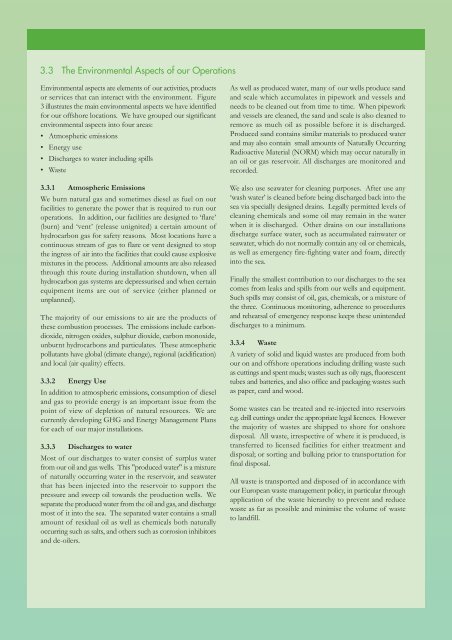
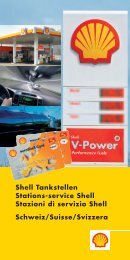
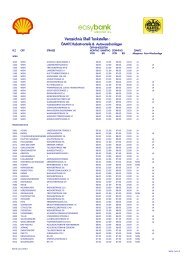
![Download Shell AutoGas Stationen [Stand: Januar 2013] (PDF](https://img.yumpu.com/9982753/1/190x245/download-shell-autogas-stationen-stand-januar-2013-pdf.jpg?quality=85)
